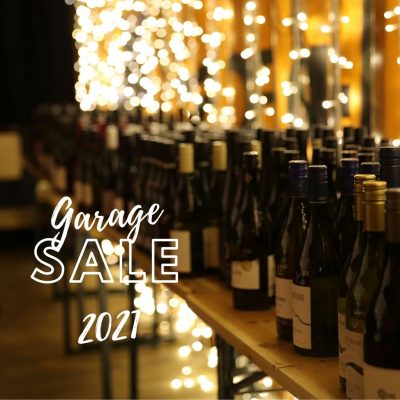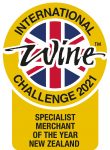No products in the cart.
Central Otago Pinot Journey…
The only mixed case on our Christmas list…
When gazing lovingly at our revamped Christmas Gift page, my heart felt empty. Well not empty (because our collection is pretty bloody badass), but as if it was missing a slither, a broken piece, a little Central Otago goodness if you will.
It was upon this thought process that I felt the need to add a new mixed case to our collection. And with that…
The Central Otago Pinot Journey was born.
Featuring:
- Bannockburn: Te Kano Kin Pinot Noir 2018
- Bendigo: Prophet’s Rock Home Pinot Noir 2018
- Gibbston: Valli Gibbston Pinot Noir 2017
- Cromwell: Burn Cottage Pinot Noir 2019
- Wanaka: Rippon Mature Vine Pinot Noir 2016
- Alexandra: Two Paddocks Picnic Pinot Noir 2019
Now it’s no news to anyone that Central Otago is an iconic region for Pinot Noir, but what’s the history behind it? We want to leave this part to the legends that are Altitude Tours NZ - after reading this, we’re forever dreaming of being back in Central O!
At the beginning of the 1980s Ann Pinkney was joined by Alan and Rolfe as they attempted to produce wine together on Ann’s property. In 1985 – 10 years after Ann had first planted her grapes she would produce a Gewürztraminer, and Rolfe would produce a Chasselas from his vines in Wanaka. In 1987 her winery obtained the necessary government paperwork to be legal and all three pioneers would produce wines. Ann’s Gewurztraminer was released under her winery label Taramea, Rolfe produced a Pinot Noir under his label Rippon and Alan produced what is regarded as Central Otago’s first commercial wine – a Pinot Noir under his label Gibbston Valley Wines.
Joined by winemakers Greg and Rob Hay, Alan went on to produce a very big style of Central Otago Pinot Noir that almost instantly became internationally recognised and respected. By the mid-1990s the wine-rush was well underway and between 1996 and 2004 the wineries in Central Otago grew from just 11 to a staggering 75 and today over 100 vineyards grace the region.
Both Greg and Rob became equally influential in the Central Otago industry with Greg starting the multi-award winning Peregrine Winery and Rob the iconic Chard Farm, a vineyard that has become synonymous with the term vineyards on the edge (referring to the fact that Central Otago and particularly those in and around Gibbston are considered absolutely at the extreme for cold and altitude for the production of quality grapes).
And the rest? Is history.
Central Otago’s Sub Regions
Wanaka
Wanaka is the smallest of all of Central Otago’s sub-regions in terms of production; predominantly focusing on Pinot Noir, but also producing Riesling and Gewurztraminer. Due to the area being at the edge of the lake, Wanaka has a cooler, wetter climate than the rest of Central Otago. The lake also provides a temperature-moderating effect that helps to reduce the risk of frost in surrounding vineyards. One of the most distinguishing features of Wanaka’s terroir is the soil. The bedrock is dominated by schist, and the coarse gravels and silty moraine have been deposited in the area by glacial movement over time.
Cromwell
This area is located on the western side of Lake Dunstan stretching north for some 25km from the township of Cromwell. The majority of plantings are situated on the lower terraces and valley floor running parallel to the snow-capped Pisa mountain range producing seductive wines. The climate is dry and warm, with temperature extremes moderated by the lake. Soils are quite diverse, with large areas of sandy-loam, and of gravelly, schist-based zones at higher elevations in Lowburn. This early ripening area produces supple, approachable, generously fruited styles of Central Otago Pinot Noir, with silky tannins.
Bannockburn
On the south bank of the Kawarau River, at the southern terminus of the Cromwell Valley, the vineyards occupy one of the warmest, driest sites in the region. Bannockburn’s “man-made” soils have proven excellent for premium viticulture, as seen through Central Otago’s many years of biodynamic winemaking. The warmer climate leads to ripe fruit flavours in the grapes, meaning Bannockburn Pinot Noir is often heavier and more tannic than wines from other sub regions.
Bendigo
Being the eastern part of Central Otago, Bendigo is most famous for its Pinot Noir wines. Red wines made from Pinot Noir in Bendigo are richly flavours with strong tannins, and are considered to be among the most muscular, full-bodied wines made in Central Otago. Due to its position in the rain shadow of the Southern Alps, the region has a semi-arid climate; temperatures in mid-summer can reach as high as 35 degrees. Hot, sunny days during the growing season are followed by cooler nights, which slows the ripening process and allows grapes to retain acidity.
Gibbston
Just east of Queenstown, Gibbston is the highest sub-region, sitting just above the Kawarau River. Wines produced here are more supple and restrained that Bendigo and Bannockburn. Originally, Gibbston was a gold mining area, and like the other sub regions, this is the reason why people resided here in the 1860s. However, after the gold dried up, the area was a part of the Waitaki sheep station, and this is how it remained for many years. It wasn’t until the 1970s and 80s, that growers began to see the potential of the area for premium viticulture. The schist-based soils have proved excellent for Pinot Noir, Riesling and Chardonnay vines.
Alexandra
Wines produced here are usually more full-bodied Pinot Noirs, but is perhaps more famous for being the southernmost wine-producing area in the world. The climate is dry and runs to extremes in both summer and winter. The marked daily climatic variations right up to harvest give vividly varietal, aromatic, finely structured wines. As in much of Central Otago, the soils are mainly made up of mica schist; which aids in free-draining and retaining heat well, which benefits the vineyards. Vines, on the other hand, are forced to grow deep and strong root systems as they search for water, creating low yields of high quality grapes.
Share on facebook
Facebook
Share on twitter
Twitter
Share on linkedin
LinkedIn









